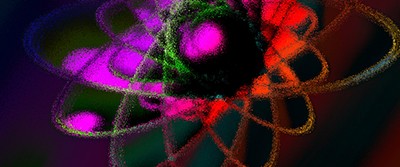Are New Atomic Particles Escaping Detection?

By Dora Fatula
Particle physicists are wondering whether they need to update their standard methods for finding new atomic particles.
The same methods have been used for decades — force protons or electrons to collide at high speeds and then look for new particles as they are released from any new materials created by the collisions. Now, scientists are wondering if some new longer-lived particles may have escaped detection.
Key Atomic Particles
Quarks are elementary particles that are fundamental to matter, and combine to form composite particles called hadrons. Quarks cannot be directly observed or found in isolation, so most of our understanding of quarks has come from the study of hadrons.
A hadron is a composite particle of two or more quarks held together by a strong force. Ordinary matter is made of two specific hadrons: protons and neutrons. Protons and neutrons are baryons, a subset of hadrons with an odd number of quarks. A hadron with an even number of quarks is called a meson. Other combinations of hadrons and quarks also exist.
Particles can also be classified as bosons and fermions based on spin. Bosons follow Bose-Einstein statistics, while fermions obey the Pauli exclusion principle and follow Fermi-Dirac statistics. Both bosons and fermions can be elementary or composite particles.
No New Particles?
The Higgs boson, discovered in 2012, was the final composite particle whose existence was predicted by the Standard Model of Particles and Forces. No discoveries outside the Standard Model have been reported.
"We haven't found any new physics with the assumptions we started with, so maybe we need to change the assumptions," says Juliette Alimena. At Ohio State University in Columbus, Alimena works with the Compact Muon Solenoid (CMS), one of the two main particle detectors fed by the Large Hadron Collider (LHC).
Although the existence of long-lived particles beyond the Standard Model has been suggested, the CMS and ATLAS (A Toroidal LHC Apparatus) were designed to detect only rapidly decaying particles. With data from millions of collisions, some evidence may have been inadvertently deleted or ignored, or evidence seen as an anomaly or a mistake.
Adjusting Parameters
Detecting long-lived particles has not been a focus, but researchers are now sharing information about their search efforts. Considerations include:
- More triggers for long-lived particle searches during the next LHC run (2021 through 2023)
- New detectors for existing systems to find particles that survive longer
- A tracking chamber placed next to a smaller LHC-fed detector to create a “Compact Detector for Exotics” to search for long-lived particles
The LHC will be upgraded after its next run, so physicists need to look for new particles now, before collision energies change and the opportunity is lost.
Discussion Questions
- What is the difference between an accelerator and a collider?
- Why was discovery of the Higgs boson so important?
- When did the study of atomic particles begin?
Vocabulary
- Particle Physics
- Assumption
- Decade